Click on images to enlarge
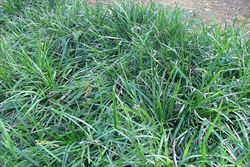
mass amenity planting (Photo: Sheldon Navie)
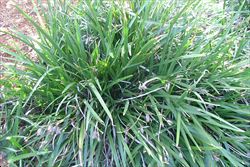
habit (Photo: Sheldon Navie)

close-up of strap-like leaves (Photo: Sheldon Navie)

white flower with purple and yellow markings (Photo: Sheldon Navie)

close-up of immature fruit (Photo: Sheldon Navie)
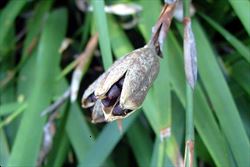
close-up of mature fruit with seeds (Photo: Sheldon Navie)

seedlings germinating amongst adult plants (Photo: Sheldon Navie)

habit from above (Photo: Sheldon Navie)

strap-like leaves (Photo: Sheldon Navie)
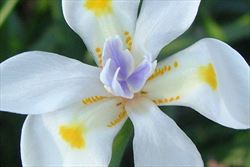
close-up of flower showing the purplish style branches and plain white inner 'petals', which lack any markings (Photo: Sheldon Navie)
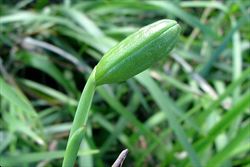
close-up of young fruit subtended by two bracts (Photo: Sheldon Navie)

young plant (Photo: Sheldon Navie)
Scientific Name
Dietes iridioides (L.) Sweet ex Klatt
Synonyms
Dietes vegeta auct.
Family
Iridaceae
Common Names
African iris, butterfly iris, Cape iris, dietes, fortnight lily, rock iris, wild iris
Origin
Native to eastern and southern Africa (i.e. Ethiopia, Kenya, Tanzania, Uganda, eastern Zaire, Malawi, Mozambique, Zambia, Zimbabwe, Swaziland and South Africa).
Naturalised Distribution
This species has recently become locally naturalised in south-eastern South Australia. It is also sparingly naturalised south-eastern Queensland and southern Victoria, and possibly also naturalised in the coastal districts of central New South Wales.
Notes
Wild iris (Dietes iridioides) is regarded as a potential environmental weed or a "sleeper weed" in many parts of southern Australia. It has been reported from urban bushland in the Hornsby Plateau region to the north of Sydney Harbour and also from remnant patches of native woodlands in the Maranoa Gardens in suburban Melbourne.
Note: this species is commonly confused with large wild iris (Dietes grandiflora), another emerging environmental weed.

